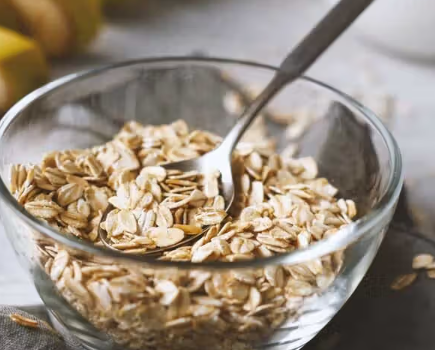The modern farmhouse style has become a staple for creating inviting, stylish homes. It beautifully blends the cozy charm of traditional country living with the sleek appeal of modern design. If you’re ready to transform your space, these top 10 decor ideas will help you create a timeless, sophisticated atmosphere that feels both comfortable and elegant.
1. Start with a Neutral Palette and Earthy Tones
The foundation of any modern farmhouse interior is a neutral color scheme. Soft shades of white, beige, and gray offer a calming and clean backdrop. To add warmth and depth, incorporate earthy accents such as olive green, rich caramel, or navy blue. These subtle tones enhance the space’s serene feel while allowing you to easily update your decor over time. The flexibility of neutral colors makes them perfect for creating both classic and luxury modern farmhouse styles.
2. Incorporate Reclaimed Wood Features
Reclaimed wood is a key element in modern farmhouse design, bringing rustic charm and sustainability to your home. Whether it’s used for ceiling beams, a statement coffee table, or accent walls, reclaimed wood adds character and warmth. Combine it with polished finishes like glass or metal to create a striking contrast. If you’re designing a home in an area like the Bay Area, sourcing locally reclaimed wood adds authenticity and eco-friendly appeal.
3. Make an Impact with Lighting
Lighting is essential in modern farmhouse interiors, where oversized fixtures make a bold statement. Industrial pendant lights, wrought iron chandeliers, or cage-style sconces bring both style and practicality. Mixing materials like wood and metal enhances the layered effect. Soft, warm lighting helps create a cozy atmosphere, while dimmer switches give you the flexibility to adjust the mood. The right lighting can transform any room, adding both function and flair.
4. Mix Antique and Modern Furniture
A hallmark of modern farmhouse style is blending vintage pieces with contemporary designs. Combine a rustic wooden dining table with sleek, upholstered chairs to create a balanced and inviting space. Antique trunks can double as coffee tables, while modern sofas in neutral tones keep the look fresh. This fusion of old and new gives your home a timeless feel, making it a welcoming place for both relaxation and entertainment.
5. Design a Farmhouse-Inspired Kitchen
The kitchen is the heart of any modern farmhouse home. Features like shaker-style cabinets, open shelving, and classic apron-front sinks define this look. For a more luxurious take, opt for marble or quartz countertops, paired with high-end appliances. A large kitchen island offers extra workspace and serves as a social hub. Add vintage-inspired fixtures and hardware for a touch of charm while maintaining modern functionality.
6. Add Depth with Dark Accents
While modern farmhouse designs typically favor light and airy elements, dark accents can bring sophistication and drama to the space. Black window frames, cabinetry, or hardware create striking contrasts with neutral tones. Deep charcoal or navy walls in certain areas, coupled with warm wooden finishes, can enhance the luxurious feel of your home. This mix of light and dark adds visual interest and depth to your decor.
7. Layer Cozy Textiles for Warmth
Textiles are essential in creating a welcoming, warm atmosphere. Layer area rugs, throw blankets, and cushions to add texture and visual appeal. Natural materials like wool, linen, and cotton enhance the organic feel of your space. Play with patterns such as stripes, plaid, or florals to inject charm and personality into your rooms. A combination of a jute rug with a soft wool overlay can create a cozy yet stylish look in living rooms or bedrooms.
8. Blur the Lines Between Indoors and Outdoors
One of the beauties of modern farmhouse design is its connection with nature. Large sliding doors, bay windows, or skylights bring in natural light and create an open, airy feel. Decorate with potted plants, fresh flowers, or natural wood furniture to merge your indoor and outdoor spaces. This approach is particularly suited to regions like the Bay Area, where outdoor beauty can complement your home’s interior. An outdoor patio with rustic furniture and farmhouse-inspired touches enhances this seamless connection.
9. Accessorize with Purpose
Accessorizing thoughtfully is key to achieving the polished look of a modern farmhouse. Focus on functional yet decorative items like metal vases, woven baskets, and antique clocks. Wall art featuring botanical prints, country scenes, or inspirational sayings can inject personality into your space. Floating shelves provide a stylish way to display curated pieces without overcrowding the room. Personal items such as family heirlooms or vintage treasures make your home feel unique while staying true to the farmhouse aesthetic.
10. Prioritize Functionality Without Compromising Style
The beauty of modern farmhouse interiors lies not only in their aesthetic but also in their functionality. Choose multi-purpose furniture such as storage ottomans, kitchen islands with seating, or built-in shelving units. Mudrooms with integrated storage and hooks provide practical solutions for busy households. Every element in your home should serve a purpose, whether it’s functional or decorative, contributing to a well-rounded and efficient space.
Why Modern Farmhouse Style Endures
The modern farmhouse style is celebrated for its timelessness and versatility. By combining rustic elements with contemporary design, it creates a space that is cozy yet refined. This style works in all kinds of homes, from urban apartments to sprawling country estates. Particularly in areas like the Bay Area, the style seamlessly blends with the region’s natural surroundings and focus on sustainability.
Whether you prefer light and airy tones or a more dramatic, dark modern farmhouse interior, this style offers endless possibilities for customization. Its ability to adapt with changing trends ensures it will remain a beloved design choice for years to come.
Conclusion
Modern farmhouse decor strikes the perfect balance between rustic charm and modern sophistication. By following these top 10 ideas, you can transform your home into a stylish and welcoming space. Whether you’re drawn to light and fresh designs or dark, dramatic accents, this timeless style offers plenty of room for personalization and creativity. Embrace modern farmhouse decor, and your home will become a cozy, elegant retreat for years to come.


















